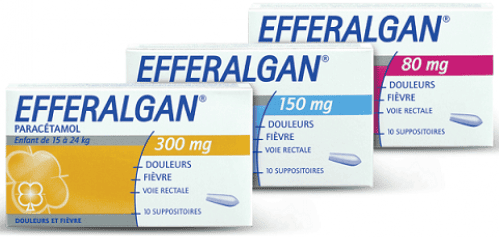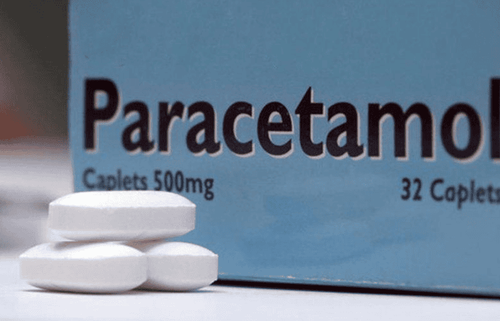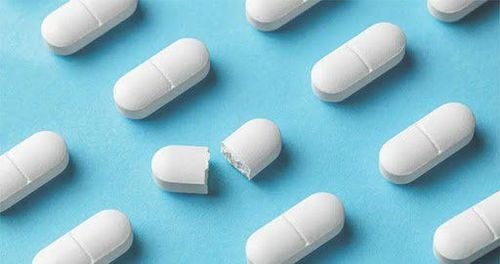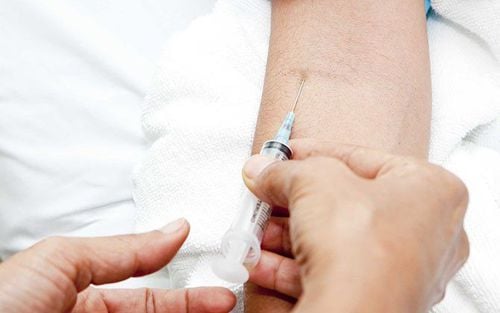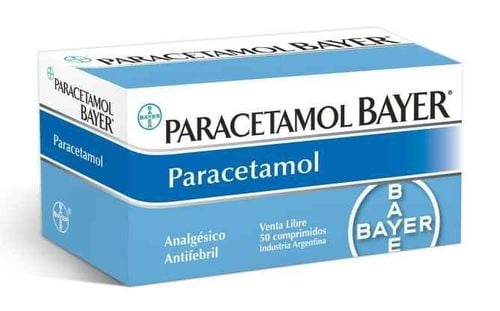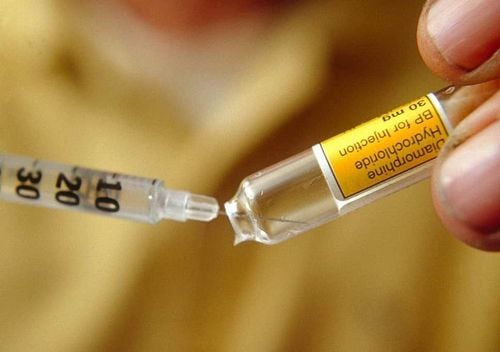This is an automatically translated article.
Cetabudol has the main active ingredients tramadol (an opioid pain reliever) and paracetamol. Cetabudol is used to relieve acute pain for a short period of time (5 days or less). So how should drugs be used to ensure safety?
1. What effect does Cetabudol have?
Cetabudol has the main active ingredient tramadol 37.5mg and paracetamol 325mg is used to relieve acute pain in a short time (5 days or less). Tramadol is a synthetic opioid analgesic with central nervous system analgesic effects and can be as addictive as morphine. Tramadol and its metabolite bind to the receptor and reduce the re-entry of norepinephrine into the cell, thus providing an analgesic effect. Paracetamol is a commonly used pain reliever and fever reducer. With therapeutic doses, paracetamol has little effect on cardiovascular and respiratory, does not change acid-base balance, does not cause irritation or gastric bleeding, does not affect platelets or bleeding time like salicylates. Because paracetamol only affects the cyclooxygenase enzyme of the central nervous system.
Tramadol is well absorbed from the gastrointestinal tract but undergoes extensive first-pass metabolism in the liver, so the absolute bioavailability of the drug is only about 75%. The time to reach maximum blood concentration varies between tramadol and its metabolite. Tramadol has a maximum concentration in the blood after 2 hours, while the metabolite M1 is 3 hours. In the blood, the drug is 20% bound to proteins. The drug is mainly eliminated by the kidneys 90% and 10% in the faeces, in the form of untransformed form, accounting for 30% and 60% of the metabolism. Paracetamol is rapidly absorbed from the gastrointestinal tract with peak plasma concentrations occurring about 30-60 minutes after oral administration. Paracetamol is widely distributed in most tissues of the body. Paracetamol is not significantly bound to plasma proteins at usual therapeutic concentrations, but binding increases with increasing concentrations. The half-life of paracetamol varies from about 1 to 3 hours. Paracetamol is metabolised mainly in the liver and excreted in the urine mainly as glucuronide conjugates (60-80%) and sulphate conjugates (20-30%).
2. Dosage of cetabudol
Adults and children 12 years of age and older: The starting dose is 2 tablets/day. Dosage adjustment depends on pain severity and patient response. Dosage can be increased if necessary but not to more than 8 tablets/day (equivalent to 300 mg tramadol and 2600 mg paracetamol). Drink every 6 hours.
Children under 12 years: Safety of Cetabudol has not been established in children under 12 years of age.
Elderly: Note that in patients over 75 years of age, the dosing interval should be at least 6 hours, due to an increase in half-life of approximately 17%.
Patients with renal impairment: Because the drug contains tramadol, it is not indicated for patients with severe renal impairment (creatinine clearance < 10ml/min). Increase dosing intervals every 12 hours in patients with moderate renal impairment (creatinine clearance 10 to 30 ml/min).
3. Contraindications of Cetabudol
The patient is hypersensitive to any of the ingredients of the drug.
Patients with alcohol poisoning, sleeping pills, drugs affecting the central nervous system, opioids and psychotropic drugs.
Patient is taking monoamine oxidase (MAO) inhibitors or has stopped taking them within 2 weeks.
Patients with severe liver failure, uncontrolled seizures, severe respiratory failure.
4. What are the side effects of Cetabudol?
When using Cetabudol, patients may experience unwanted effects including:
Very common, ADR frequency > 1/10: dizziness, drowsiness. Common, ADR frequency > 1⁄100: headache, hand tremor, sleep disturbance, nausea, constipation, confusion, mood changes (anxiety, nervousness, euphoria), sweating, dry mouth, diarrhea, abdominal pain, flatulence, dyspepsia, pruritus Uncommon, frequency 1/1000 < ADR < 1/100: hypertension, palpitations, tachycardia, arrhythmia, dementia , dyspnea, dysphagia, depression, hallucinations, nightmares, involuntary muscle spasms, paresthesias, tremors, hot flushes, chest pain. Rare, ADR frequency < 1/1000: seizures, drug dependence, abuse, blurred vision, changes in appetite, muscle weakness, respiratory depression, panic, anxiety, hallucinations, paresthesia, buzzing ear and CNS abnormalities.
5. Overdose of Cetabudol and how to handle it
Symptoms:
Tramadol: Tramadol overdose symptoms include vomiting, convulsions, confusion, anxiety, tachycardia, increased blood pressure, coma, respiratory failure.
Paracetamol : Paracetamol overdose has signs such as nausea, vomiting and abdominal pain (occurs within 24 hours after taking it). After 24 hours of overdose, symptoms may include right upper quadrant pain (often indicating the development of hepatic necrosis). Liver damage is most severe about 3 to 4 days after a paracetamol overdose and can lead to encephalopathy, hypoglycemia, hemorrhage, cerebral edema, and death.
Treatment:
Tramadol: depending on the degree of overdose, there will be different treatment measures. First, ensure airway, maintain good ventilation, treat aggressively, anticonvulsant with barbiturates and benzodiazepine derivatives. In case of oral tramadol poisoning, activated charcoal can be used to eliminate absorption of tramadol. There is currently no specific antidote for tramadol overdose. Using naloxone for detoxification is less effective, on the contrary, it increases the possibility of convulsions. Dialysis is also ineffective when used in the treatment of tramadol
Paracetamol overdose: It depends on the concentration of paracetamol in the plasma. Acetylcysteine helps protect the liver if taken within 24 hours of a paracetamol overdose (most effective if taken within 8 hours). The first dose was a loading dose of 140 mg/kg, followed by another 17 doses of 70 mg/kg 4 hours apart. Activated charcoal or gastric lavage may be performed to reduce absorption if a recent paracetamol overdose has occurred.
6. Notes when using Cetabudol
Patients should be warned about signs of serious skin reactions such as toxic skin necrosis syndrome (TEN), Stevens-Johnson syndrome (SJS), Lyell's syndrome, and generalized pustular rash. acute (AGEP).
Caution should be exercised in patients with renal impairment with creatinine clearance < 10 ml/min.
Cetabudol should be used with caution in opioid-dependent patients, in patients with traumatic brain injury, convulsions, biliary tract disorders, shock, unexplained altered consciousness, problems affecting affect the respiratory system or respiratory dysfunction, increase intracranial pressure.
Reactions to withdrawal can occur similar to those of opiate withdrawal. When tramadol was used with enflurane and nitrous oxide, it has been reported to accelerate surgical resuscitation. Drinking alcohol can increase liver toxicity, especially when taken concomitantly with paracetamol. Pregnant women: Cetabudol should only be used in pregnant women when absolutely necessary and prescribed by a specialist. Long-term or high-dose use of cetabudol may have the potential to cause harm to the unborn baby. Lactation: Cetabudol passes into breast milk, so consult a specialist before breast-feeding. Ability to drive and use machines: Tramadol may cause dizziness and drowsiness, especially when alcohol is consumed and is used concomitantly with drugs that depress the central nervous system. Therefore, patients should not operate machinery or vehicles while taking the drug. Cetabudol when used simultaneously with some drugs can lead to interactions, increase side effects or reduce the effectiveness of the drug. Therefore, patients need to inform medical staff of all drugs, functional foods, vitamins being used for appropriate advice and adjustment. In short, Cetabudol is indicated in acute pain relief. Patients should not self-medicate, but should consult their doctor and pharmacist before using.
Please dial HOTLINE for more information or register for an appointment HERE. Download MyVinmec app to make appointments faster and to manage your bookings easily.




